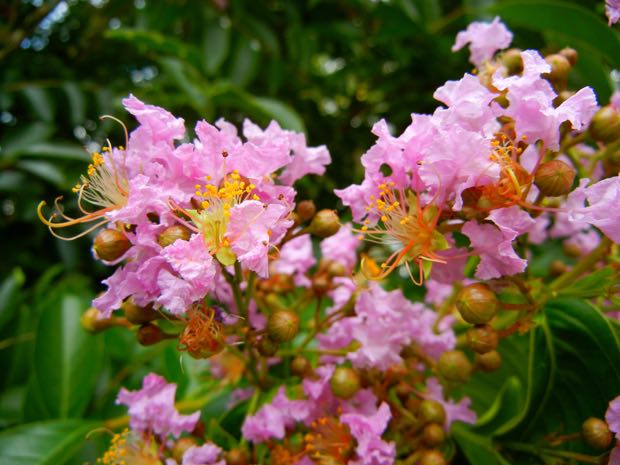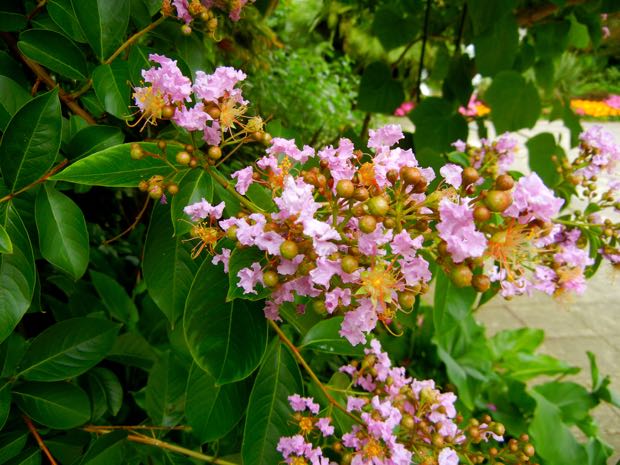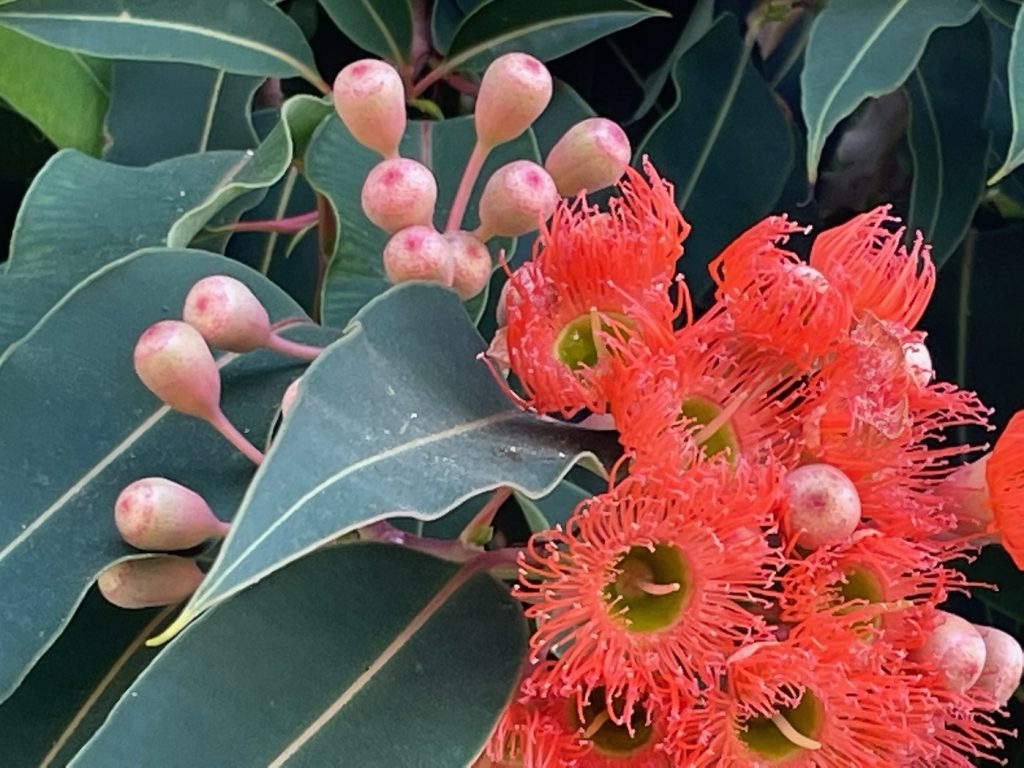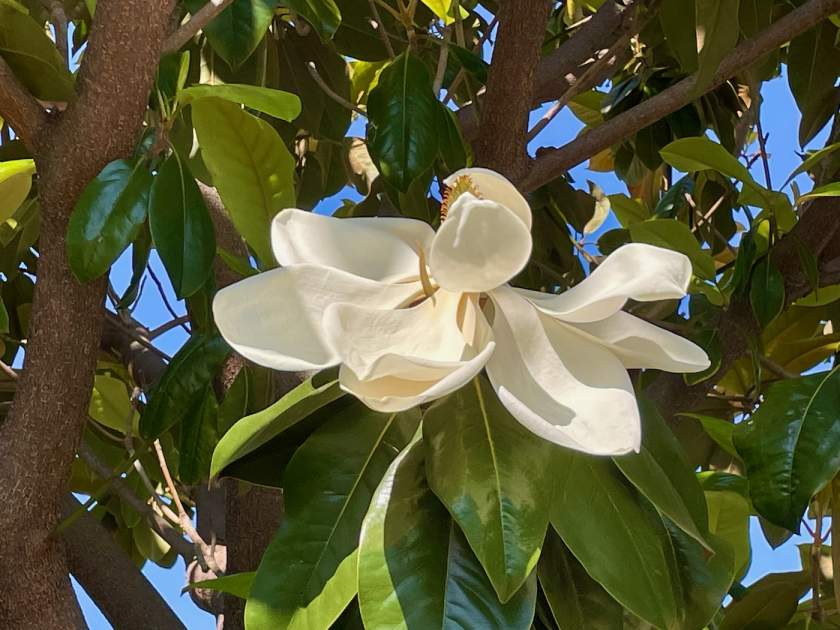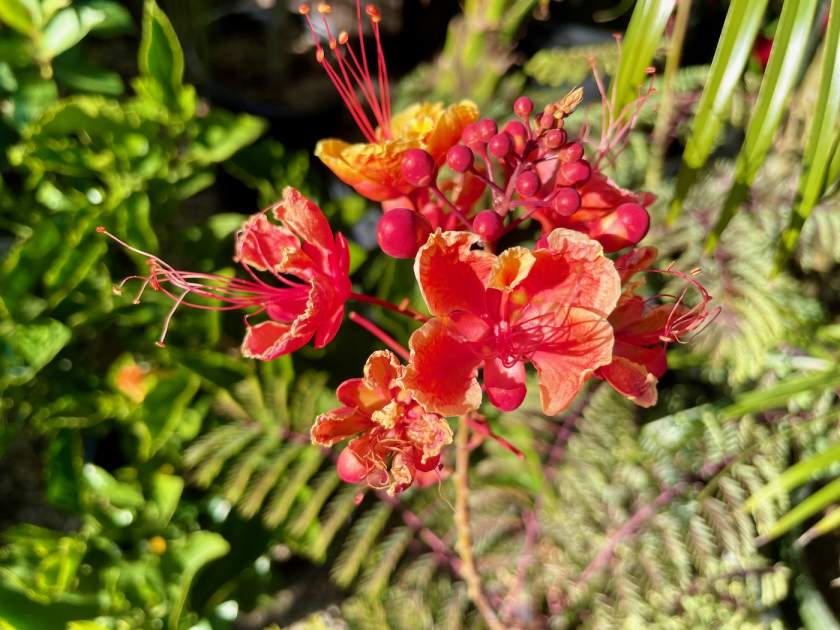Magnificent Lagerstroemia indica: Unveiling the Beauty of the Crape Myrtle
Lagerstroemia indica, commonly known as the Crape Myrtle, belongs to the Lythraceae family of plants. Named after Magnus von Lagerström, this species is native to China and Korea. It is also referred to by various names such as Crepe Myrtle, Crape Myrtle, Indian Crape Myrtle, Banaba, or Crepe Flower.
The Crape Myrtle is an upright tree or shrub with simple leaves. During the summer, it produces long-lasting pink, white, or reddish-pink flowers. These flowers have a crinkled appearance and grow in panicles. The blooming period of the crape myrtle spans from summer to autumn.
Origin and Distribution
Lagerstroemia indica is native to the Indian Subcontinent, Southeast Asia, China, Korea, and Japan. The genus name Lagerstroemia is a tribute to Swedish botanist Magnus von Lagerström. This plant is often multi-stemmed, deciduous, and has a wide-spreading, flat-topped, rounded, or spike-shaped open habit. It serves as a popular nesting shrub for songbirds and wrens.
Flowers and Foliage
The Crape Myrtle produces terminal flowers that resemble crepe paper. These flowers cluster together in panicles measuring 6 to 18 inches in length. While wild varieties exhibit rose to red flower colors, cultivated varieties come in various hues such as white, pink, mauve, lavender, and purple. The leaves of the crape myrtle are initially light green with hints of red, but they turn dark green during the summer.
They are leathery, elliptic in shape, and can grow up to 3 inches in length. During the fall, the foliage displays a range of colors from yellow to orange and red. The flowers are followed by round seed capsules that persist through the winter. The bark of the Lagerstroemia indica is smooth, exfoliating, and pale pinkish-gray.
Cultivation
Crape myrtles are indigenous to China, Indochina, the Himalayas, and Japan. They thrive in semi-shaded fields and can be found in both wild and cultivated forms. The thin bark measures about 2mm in thickness and sheds annually. The leaves also shed during winter, revealing bare branches that sprout new foliage in early spring.
The leaves are small, smooth-edged, circular, or oval-shaped, and initially dark green, but they change color to yellow, orange, and red during autumn. The flowers, found on different trees, can be white, pink, mauve, purple, or carmine, with crimped petals forming panicles up to 9 cm (3+1⁄2 in) long. The flowers give way to 6-capsuled, brown dehiscent fruits.
Growing Tips for Lagerstroemia indica:
Sunlight and Soil: Lagerstroemia indica thrive in full sun, so choose a location that receives at least 6 hours of direct sunlight each day. The soil should be well-drained, moist, and rich in nutrients. While they can tolerate a range of soil types, including sand, loam, and clay, they prefer soil that retains some moisture without becoming waterlogged.
Planting: When planting a Lagerstroemia indica, dig a hole that is twice as wide and slightly deeper than the root ball of the plant. Gently loosen the roots before placing the plant in the hole. Backfill with soil, ensuring that the plant sits at the same depth as it was in the container or nursery. Firmly tamp down the soil around the base of the plant to eliminate air pockets.
Watering: Proper watering is crucial during the establishment period. Water the newly planted crape myrtle deeply and regularly, ensuring that the soil remains consistently moist. Once the plant is established, it becomes more drought-tolerant and can withstand periods of dryness. However, during prolonged dry spells, provide supplemental watering to maintain its health and promote flowering.
Mulching: Apply a layer of organic mulch around the base of the Lagerstroemia indica to conserve moisture, suppress weed growth, and regulate soil temperature. Maintain a mulch depth of 2 to 3 inches, but keep the mulch a few inches away from the trunk to prevent rotting.
Pruning: Pruning Crape Myrtles is generally done in late winter or early spring before new growth emerges. The purpose of pruning is to shape the plant, remove dead or damaged branches, and encourage robust flowering. Avoid heavy pruning or topping, as this can negatively affect the natural form and structure of the tree. Instead, opt for selective pruning to maintain its desired size and shape.
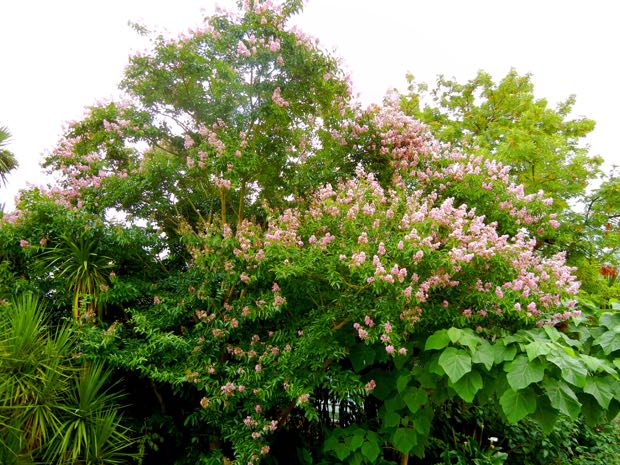
Pest and Disease Management:
While Crape Myrtles are relatively disease-resistant, they can be susceptible to certain issues. Common pests that may affect them include aphids, scales, mealybugs, and whiteflies. Regularly inspect the plant for signs of infestation, such as distorted leaves or the presence of pests, and treat them accordingly using appropriate insecticidal soaps or horticultural oils. Additionally, keep an eye out for leaf spots and powdery mildew, which can be managed by improving air circulation, avoiding overhead watering, and applying fungicides if necessary.
Winter Protection: In colder regions, it is advisable to choose Lagerstroemia indica varieties that are hardy enough to withstand winter temperatures. If you live in an area prone to frost or freezing temperatures, consider planting Crape Myrtles in a sheltered location, such as near a building or fence, to provide some protection from winter winds. Applying a layer of mulch around the base of the plant can also help insulate the roots during colder months.

